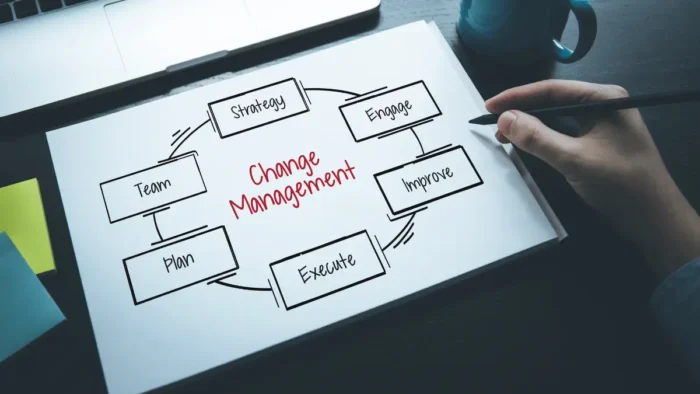For all organizational change processes, there is a reason, force, cause, or source of the organizational change. Whether it is the pressure from the environment, or it is an internal pressure, each organizational change has its causes, and these causes are sources of organizational change.
What makes small businesses and entrepreneurs really successful? It is flexibility. Flexibility means that they quickly change themselves and their businesses. All entrepreneurs must have a system through which they can follow possible sources of organizational change and without any delaying to make all necessary adjustments in their work.
Organizational changes aren’t appearing from nothing or because of themselves. For any process of performing something, there are clear reasons, and the process is the result of those reasons. If the reasons don’t exist for a specific process or action, then logically there will not be the need for that process or action. Because of the continuity of the organizational changes in the business life cycle, there will always be reasons for organizational changes. This causes (forces) are called the sources of organizational change.
External Sources of Organizational Change
On the basis of how we classify environment, we can determine the areas that will represent external sources of organizational change.
The business environment has following areas that can be seen as external sources of organizational change:
- Economical environment. Around your company there are competitors, suppliers, different interest rates, unemployment rates, income settlement, credit policy, gross domestic product, inflation, the level of international trade… All these things will have a high influence on companies and the need for changes in the organization. You need to track them in order to make the right decisions for change.
- Technological environment. Technology is simply the use of knowledge, methods and techniques that transform the inputs into the outputs of the organization. The rate with which technology as an external source of organizational change can influence on organization varies from industry to industry. As an entrepreneur, you will need to follow the development of new technology in your industry and use the latest achievements in technology development in your own business. Because of that technology will require organizational changes.
- Socio-cultural environment. Socio-cultural environment as the external environment or source of organizational changes contains people’s values, habits, norms, attitudes and demographic characteristics. Every society has different sociocultural characteristics based on the region, ethnics, settlement, etc. All of these factors will have a high influence on the way how your business operates or will operate in the future.
- Political environment. This area as an external source of organizational change deal with the laws and bylaws retrieved by the parliament as well as regulations issued by the government. Political area contains elements such as legislation, government stability, strikes, political situation in neighboring countries, taxation… These sources of organizational change must be respected by entrepreneurs and incorporated in the work of their companies.
- An international environment. A country where a company operates is a narrower environment of that company, but the wider environment is international environment. This environment recently had an increased impact on the business because of the increasing globalization of markets. What happens in the global market affects every business. The global crisis presents an example, which currently holds the whole world.
Internal Sources of Organizational Change
Internal sources of organizational change are forces which appear inside the organization. Controlling these organizational changes is easier for entrepreneurs and managers because they are from inside the organization, something that according to the managerial functions, management can control.
Related: Real-life Organizational Decision-Making Examples
As well as from external sources, we can use the same way in defining internal sources of organizational change based on the internal environment of the organization. What is the internal environment of the organization? In the simplest words, the internal environment of the organization is everything that is within the organization. The organization as a system, consists of:
- People
- Structure
- Process
People or human resources in an organization, are employees who are doing all activities in a specific company. We can have the best structure and the best processes in place, but without the people in the processes of transformation of input into the output, we will not be able to perform anything. People in the organization can be managers or employees, but all they represent a source of organizational change. Employees are persons who must take the initiative to change their workplace, or changes in work tasks for more efficient and effective performance.
The structure of the organization is a means that will not allow chaos in the work. It gives the mutual relations of all components of the organization. Organizational structure defines the place of employees in the organization according to the hierarchy and the role of them through the rules, norms and procedures. Over time, organizational structure can not answer to the needs for efficient and effective work of the organization and become an internal source of organizational change.
Processes in an organization are a collection of activities that need to be done in order to transform input to output, and that will have a value for consumers. Processes in the organization can be different, and now I will show some of them that are most relevant to business:
- Technological process is a process that transform raw materials into the products or services.
- The decision-making process is a choice that people make about specific direction in the company.
- The communication process is the dissemination of information between people in the organization.
- Management process – is the process with which organizational members are managed to achieve the organizational goals.
These processes are the sources of internal organizational changes, because all problems will require solutions, and solutions are a new way of doing things in an organization.



